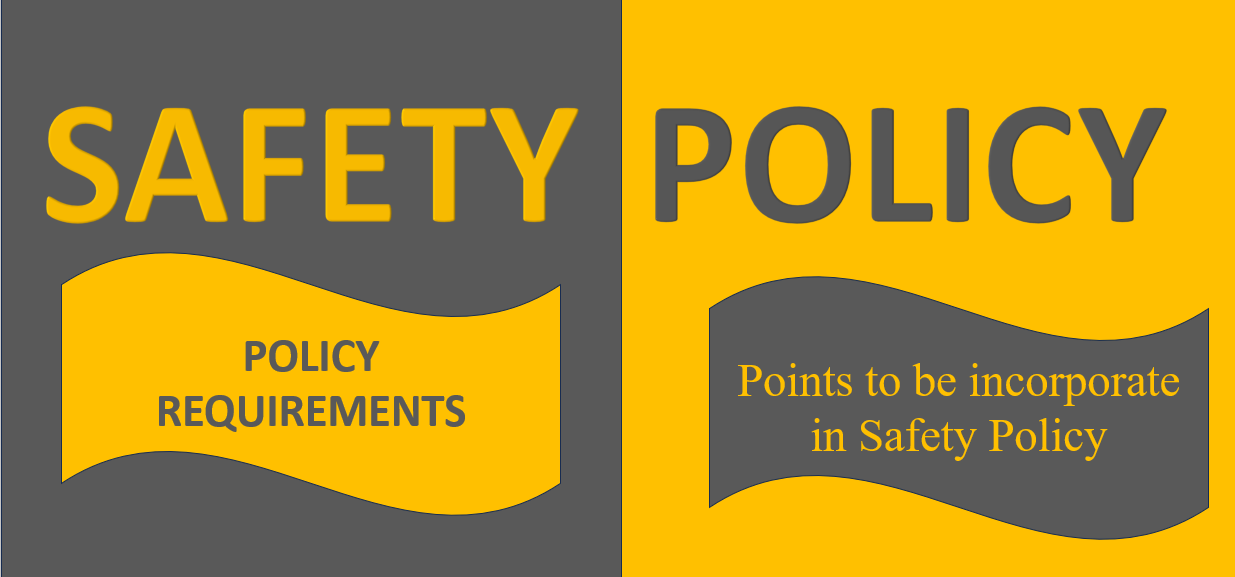🌟 Introduction
When we talk about workplace safety or comfort, our minds often jump to PPEs, ventilation, or machine guarding. But one silent factor that influences productivity, safety, and well-being every single second is something most people overlook — light.
Whether it’s a factory floor, an office cubicle, or a hospital ward, lighting plays a massive role in shaping how people work, feel, and perform. Yet, very few people understand the real difference between the quantity of light and the quality of light — two aspects that together determine whether a lighting system truly supports safe and efficient work.
In this post, we’ll explore both in detail — what they mean, why they matter, and how you can achieve the perfect balance for your workplace.
💡 The Foundation: What Is Light, Really?
Before diving into the technical stuff, let’s start simple.
Light is a form of energy that makes it possible for us to see. But not all light is equal — some environments are bright yet uncomfortable, while others are dim but cozy. That’s where the two key parameters come in:
- Quantity of Light: How much light is available (measured in lux).
- Quality of Light: How suitable that light is for human use — considering factors like color, glare, uniformity, and comfort.
Both must work hand in hand to create a safe, productive, and pleasant visual environment.
⚖️ Understanding Quantity of Light
🧭 Definition
The quantity of light refers to the amount of illumination falling on a surface. In simple words, it tells us how bright a space is. It’s measured in lux (lumens per square meter) or foot-candles (in older systems).
For example:
- A typical living room may have around 100–200 lux.
- An office might need 300–500 lux.
- A precision assembly area or laboratory might require 1000–2000 lux.
🔍 Why Quantity of Light Matters
- Safety First
Insufficient lighting can lead to slips, trips, and misjudgments — especially in industrial setups or warehouses. - Accuracy and Efficiency
Tasks requiring precision (like inspection, drawing, or surgery) need bright, consistent illumination to avoid mistakes. - Reduced Eye Strain
Proper lighting prevents fatigue, headaches, and reduced focus — all of which are common with dim or flickering lights. - Compliance with Standards
Regulatory bodies like the Illuminating Engineering Society (IES), OSHA, and Factories Act (India) specify minimum lighting levels for different work environments.
📏 Recommended Illumination Levels (in Lux)
Here’s a quick reference to understand how much light is typically recommended in different settings:
| Area / Task | Recommended Illumination (Lux) |
|---|---|
| Corridors and staircases | 100 – 150 |
| General industrial work | 200 – 300 |
| Machine operation | 300 – 500 |
| Precision assembly / inspection | 1000 – 2000 |
| General office work | 300 – 500 |
| Classroom or study room | 300 – 500 |
| Hospital wards | 150 – 300 |
| Operating theatres | 1000 – 2000 |
These values are not arbitrary — they’re derived from human vision research, ensuring both visibility and comfort.
🌈 Understanding Quality of Light
Now that we’ve tackled quantity, let’s explore the quality of light, which is equally — if not more — important.
🧠 Definition
The quality of light determines how pleasant and effective the lighting feels to human eyes. It’s not just about brightness, but about how the light behaves — its color, direction, uniformity, and interaction with the environment.
A workplace can have enough light (in terms of lux), but still feel harsh, uncomfortable, or unsafe if the quality is poor.
🎨 Key Factors Affecting Light Quality
1. Glare
Glare is excessive brightness that causes discomfort or reduces visibility. It can come from:
- Direct glare (from a bulb or sunlight)
- Reflected glare (from shiny surfaces like polished floors or screens)
Glare can cause eye fatigue, errors, and reduced reaction time — a major safety hazard in industrial or traffic areas.
👉 Tip: Use anti-glare fixtures, diffusers, and matte finishes on surfaces.
2. Uniformity of Illumination
Uniform lighting ensures that there are no dark or overly bright patches.
Uneven illumination causes the eyes to constantly adjust, leading to strain and discomfort. Moreover, shadows can hide hazards like steps, cables, or moving machinery parts.
👉 Tip: Use a balanced combination of direct and indirect lighting for uniform brightness.
3. Color Rendering Index (CRI)
CRI measures how accurately a light source shows colors compared to natural sunlight (rated from 0 to 100).
- A CRI above 80 is generally good for workplaces.
- Below 70, colors appear distorted — which can be dangerous in industries like painting, printing, or electrical wiring where color differentiation matters.
👉 Example: Identifying color-coded wires in low CRI lighting can lead to costly or even fatal mistakes.
4. Color Temperature
Measured in Kelvin (K), color temperature affects the “feel” of the lighting.
| Type of Light | Color Temperature (K) | Appearance |
|---|---|---|
| Warm White | 2700 – 3500 | Relaxing, cozy, suitable for lounges and break rooms |
| Neutral White | 4000 – 4500 | Balanced, natural, good for offices |
| Cool White / Daylight | 5000 – 6500 | Crisp and alerting, best for workshops or inspection areas |
👉 Tip: Choose warm tones for relaxation zones and cool tones for workspaces that demand attention.
5. Flicker and Stability
Unstable or flickering lights are not just annoying — they can trigger headaches, migraines, or even seizures in sensitive individuals.
👉 Tip: Modern LED systems with good drivers minimize flicker and ensure stable illumination.
6. Direction and Control
Light should be directed where it’s needed without causing shadows or reflections. Poorly positioned lights can create glare on computer screens or reflective surfaces.
👉 Tip: Use adjustable fixtures and task lighting for control and flexibility.
🌍 The Perfect Balance: Quantity + Quality
Having the right quantity without quality is like having enough food but no flavor.
A well-lit workplace is one where:
- The illumination level matches the type of task.
- The light feels comfortable and natural.
- Shadows, glare, and reflections are minimized.
- Workers can see clearly without strain.
For example:
- A precision workshop might have 1000 lux cool white LED lights with a CRI above 90.
- A cafeteria might use 300 lux warm white lights to create a relaxing atmosphere.
In both cases, the balance of quantity and quality is tailored to the environment.
🔋 Energy Efficiency and Sustainability
Modern lighting design doesn’t stop at brightness and comfort — it also embraces energy efficiency.
- LEDs provide higher lumens per watt and longer life spans.
- Smart lighting systems adjust brightness automatically based on occupancy and daylight.
- Natural lighting reduces energy costs and enhances mood.
By optimizing both quantity and quality of light, workplaces can reduce electricity bills and carbon footprint without compromising safety or comfort.
🧰 Measuring and Evaluating Light
1. Using a Lux Meter
A lux meter measures the quantity of light at different points. Regular measurements help ensure lighting stays within recommended ranges.
2. Conducting a Lighting Audit
A lighting audit includes:
- Measuring lux levels.
- Checking uniformity.
- Evaluating glare and CRI.
- Identifying maintenance or upgrade needs.
Many organizations perform these audits annually as part of their safety management system.
🛠️ Maintenance and Upkeep
Even the best lighting system degrades over time. Dust, aging bulbs, and dirty reflectors can reduce illumination by up to 30%.
✅ Maintenance Tips:
- Clean fixtures and diffusers regularly.
- Replace lamps and tubes at end-of-life intervals.
- Use reflective paint for ceilings and walls to boost brightness.
- Reassess lighting whenever workspace layouts change.
🧩 Psychological Impact of Light
Beyond physical visibility, light has a psychological effect too.
- Bright and cool lights stimulate alertness and focus.
- Warm lights induce relaxation and comfort.
- Exposure to natural light helps regulate circadian rhythm and improves mood.
In fact, workplaces with good daylight integration report higher job satisfaction and lower absenteeism.
🏭 Case Example: Illumination in Industrial Settings
Imagine a fabrication plant with welding, machining, and inspection areas.
- Welding area: Needs localized bright light (1000 lux) with high CRI to differentiate metal colors.
- Machining area: Requires 500 lux uniform lighting to see details and ensure precision.
- Inspection area: Should have 1500–2000 lux with cool white, shadow-free light for detecting defects.
Each section demands a different combination of quantity and quality, emphasizing how tailored lighting enhances both safety and efficiency.
🚨 Consequences of Ignoring Lighting Standards
Many organizations underestimate the cost of poor lighting until it’s too late.
Some common outcomes include:
- Increased accidents and near-misses.
- Poor product quality due to visual errors.
- Reduced worker morale and higher turnover.
- Eye fatigue, headaches, and stress.
- Non-compliance penalties under Factory Rules or OSHA regulations.
Lighting should therefore be seen as an investment, not an expense.
🧠 Key Takeaways
- Quantity of light = How much illumination is available (lux).
- Quality of light = How comfortable, uniform, and color-accurate the light feels.
- Both are essential for safety, productivity, and health.
- Regular maintenance, audits, and upgrades ensure consistent performance.
- A balanced lighting system reduces accidents, improves morale, and saves energy.
✨ Final Thoughts
The right lighting doesn’t just help you see better — it helps you work better, feel better, and live better.
So, the next time you’re evaluating your workplace safety, don’t forget to look up. The lighting above you might just be the most underestimated safety tool you have.
Invest in the quantity and quality of light, and you’ll be investing in your people, your productivity, and your peace of mind.
✅ Pro Tip:
Want to improve workplace illumination? Conduct a simple lighting survey today — measure lux levels, check for glare, and ask workers about their comfort. You’ll be surprised how small adjustments can make a big difference in safety and morale.
🔁 Readers also enjoyed these blog posts:
- Safety Management’s Role: The Unsung Hero Behind Every Successful Organization
- Safety Management and Its Responsibilities: Protecting People, Preventing Hazards, and Promoting a Culture of Care
- Benchmarking for Safety Performance: A Key to Continuous Improvement
“Start Your Website Journey Today – Exclusive Hostinger Discounts!”

Turn Any Idea into Viral,
Jaw-Dropping AI Videos in Seconds!










